Major Progress in 'Archaeological China' Project: Baliqiao Site in Fangcheng County, a Core Area of the Southern Xia Dynasty
On September 13, the National Cultural Heritage Administration held a meeting in Beijing on the major progress in the "Archaeological China" Project, releasing the latest progress in archaeological projects such as the Baliqiao Site in Fangcheng County, Henan Province. Archaeological excavations show that the Baliqiao Site covers an area of 1.35 million square meters, with complete functional zones, rammed-earth construction areas, handicraft industry areas, walls, yards, roads, and other facilities. High-grade relics such as jade wares, divination bones, turquoise inlays and copper metallurgy have been unearthed, highlighting the prominent productivity and social status of the Baliqiao Site as the core settlement area in the southern part of the Xia Dynasty.
9月13日,国家文物局在北京召开“考古中国”重大项目重要进展工作会,发布河南省方城县八里桥遗址等考古项目最新进展。考古发掘表明,八里桥遗址面积135万平方米,功能区划完备、有夯土建筑区、手工业区、墙垣、道路等设施,出土有玉器、卜骨、绿松石嵌片、冶铜遗存等高等级遗物,彰显出八里桥遗址较高的社会生产力和社会地位,是夏王朝南方重要的核心聚落。
The Baliqiao Site is located on the west bank of the Pan River in Chengzhuang Village, Fangcheng County, Henan Province. It is named after the Baliqiao Bridge on the Pan River. Located in the northeast part of Nanyang Basin, the Site serves as the guard of the important passage from the Central Plains to the Jianghan Plain. Since ancient times, it has been an area of strategic importance for cultural exchanges between the North and the South of China. With the support of the "Archaeological China" Project, the Henan Provincial Institute of Cultural Heritage and Archaeology and the Nanyang Institute for the Preservation of Cultural Heritage have carried out systematic archaeological work at the Baliqiao Site and made important achievements since 2022.
八里桥遗址位于河南省方城县赭阳街道程庄村,潘河西岸,因八里桥而得名。遗址地处南阳盆地东北隅,扼守中原地区经南阳盆地进入江汉平原的重要通道,自古以来就是南北文化交流、碰撞的重要区域,战略位置极其重要。在“考古中国”重大项目支持下,2022年以来,河南省文物考古研究院联合南阳文物保护研究院在八里桥遗址开展系统考古工作,取得重要收获。
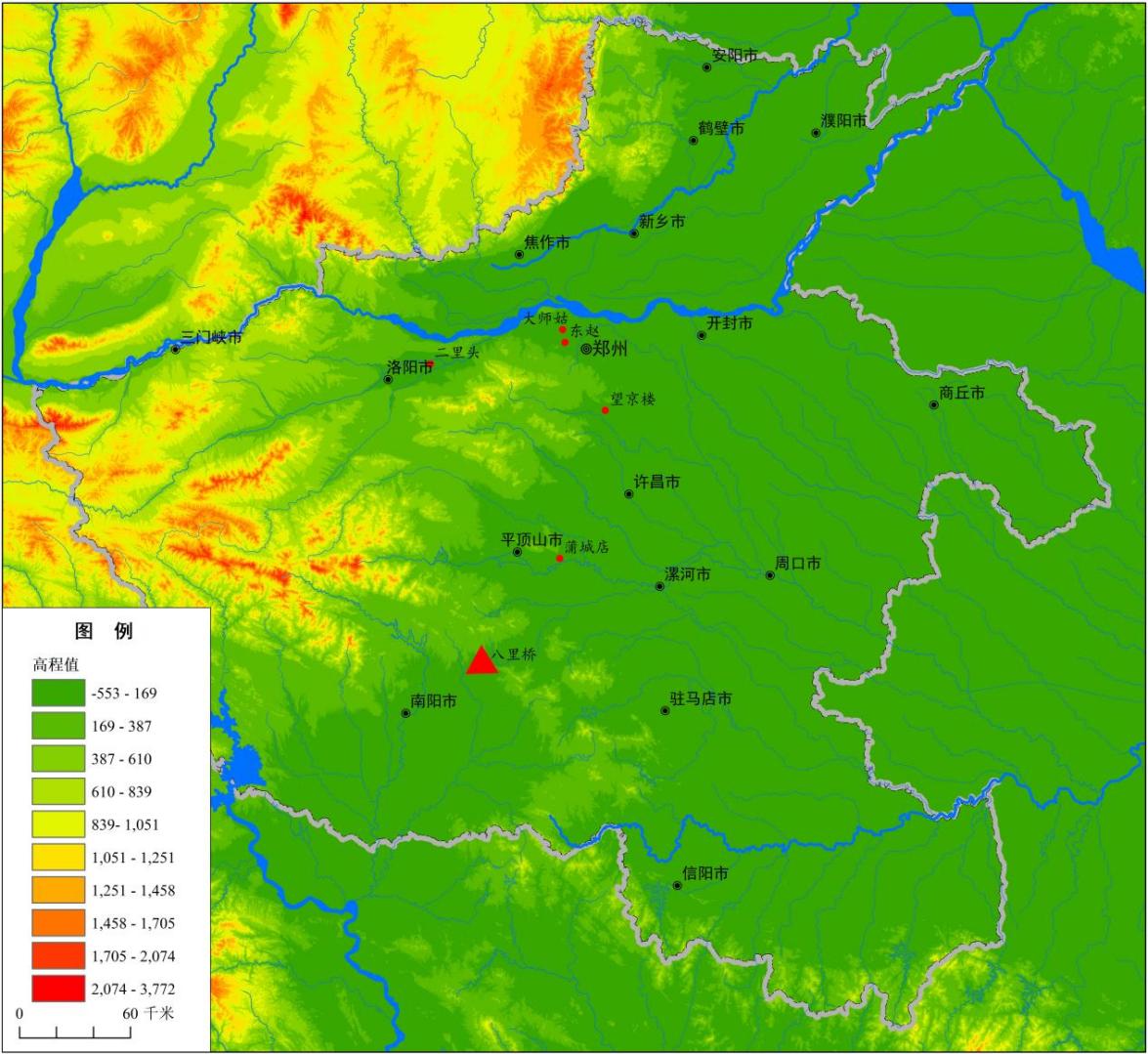 Settlement with a "Multi-grid" Layout
Settlement with a "Multi-grid" Layout
聚落呈“多网格”布局
Archaeological exploration indicates that the Baliqiao Site is a large ring trench settlement, covering 1.35 million square meters. The south ring trench stretches 750 meters, while the west ring trench extends about 1800 meters. It is the largest settlement of Erlitou Culture in southwestern Henan, spanning the era from the second to the fourth period of Erlitou Culture.
勘探表明遗址是一处大型环壕聚落。南环壕残长750米,西环壕长约1800米,现存面积135万平方米。八里桥遗址是豫西南地区面积最大的二里头文化中心聚落,时代为二里头文化二期至四期。
Eleven ditches, 8-12 meters wide and 2.5-3.7 meters deep, have been discovered. Both sides of the ditches, measuring 5-8 meters wide, are largely devoid of relics. These ditches form a crisscross pattern, suggesting careful planning. The southern area is divided into five distinct zones, showing a “multi-grid” layout similar to that of the Erlitou Site.
遗址内探明沟类遗存11处,宽8-12米,深2.5-3.7米,两侧5-8米的范围内多为空白区。这些沟类遗存纵横交错,规划有序,将南部区域分为相对完整的5个区块,呈现出与二里头遗址相似的“多网格”布局。
The area distributed with large rammed earth buildings is about 48,000 square meters. The # 1 building remains is located in the middle of a nearly rectangular yellow rammed earth platform as a large-scale building facing south, with a corridor around and a courtyard in front, in a column-net structure. The main building has a depth of 12 meters from north to south, a width of 31 meters from east to west, covering an area of 372 square meters. There are two 1.5-meter-wide doorways on the south side, and the doorways are paved with gravels. The #2 remains is located on the east side of #1, the two juxtaposed from east to west and pillar holes discovered. The rammed earth of #2 building remains is consistent with that of #1. The basic construction procedure of them is to first level the borrow pits, ash pits, pottery kilns formed because of pottery making, and next to lay loess above the foundation for ramming. The periphery of the rammed earth is paved with more delicate lime soil.
大型夯土建筑集中分布区面积约4.8万平方米。1号夯土基址位于一处近长方形黄色夯土台基中部,整体为一处坐北朝南、四周有廊、前有庭院的大型建筑,柱网结构。主体建筑南北进深12米、东西宽31米,面积372平方米;南侧有2处门道,宽1.5米,门道处用碎石子铺垫。2号基址位于1号基址东侧,两座基址东西并列,发现有柱洞,夯土状况与1号基址一致。基本营建程序是先把因制陶取土形成的大型取土坑和灰坑、陶窑等遗迹垫平夯打结实,然后铺垫较为纯净的黄土进行夯打,夯土外围则采用较细腻的灰土进行铺垫。
There are regular ash pits around the rammed earth remains near which some relatively well-preserved pottery of exquisite craftmanship and high production standard have been unearthed, including polished black clay pottery for holding wine, food and for storage, as well as vermilion-paint head statues, jade-handle-shape wares, turquoise, etc. The history is consistent with the rammed earth building remains, which indicates that the ash pits should be sacrificial pits affiliated to the rammed earth buildings.
夯土基址周围分布有形制规整的灰坑,出土较多完整陶器,制作精致,规格较高,多见磨光泥质黑皮陶,以酒器、食器、储藏器为主,以及涂朱石人头像、玉柄形器、绿松石等,时代与夯土基址一致,应当属于夯土建筑的祭祀坑。
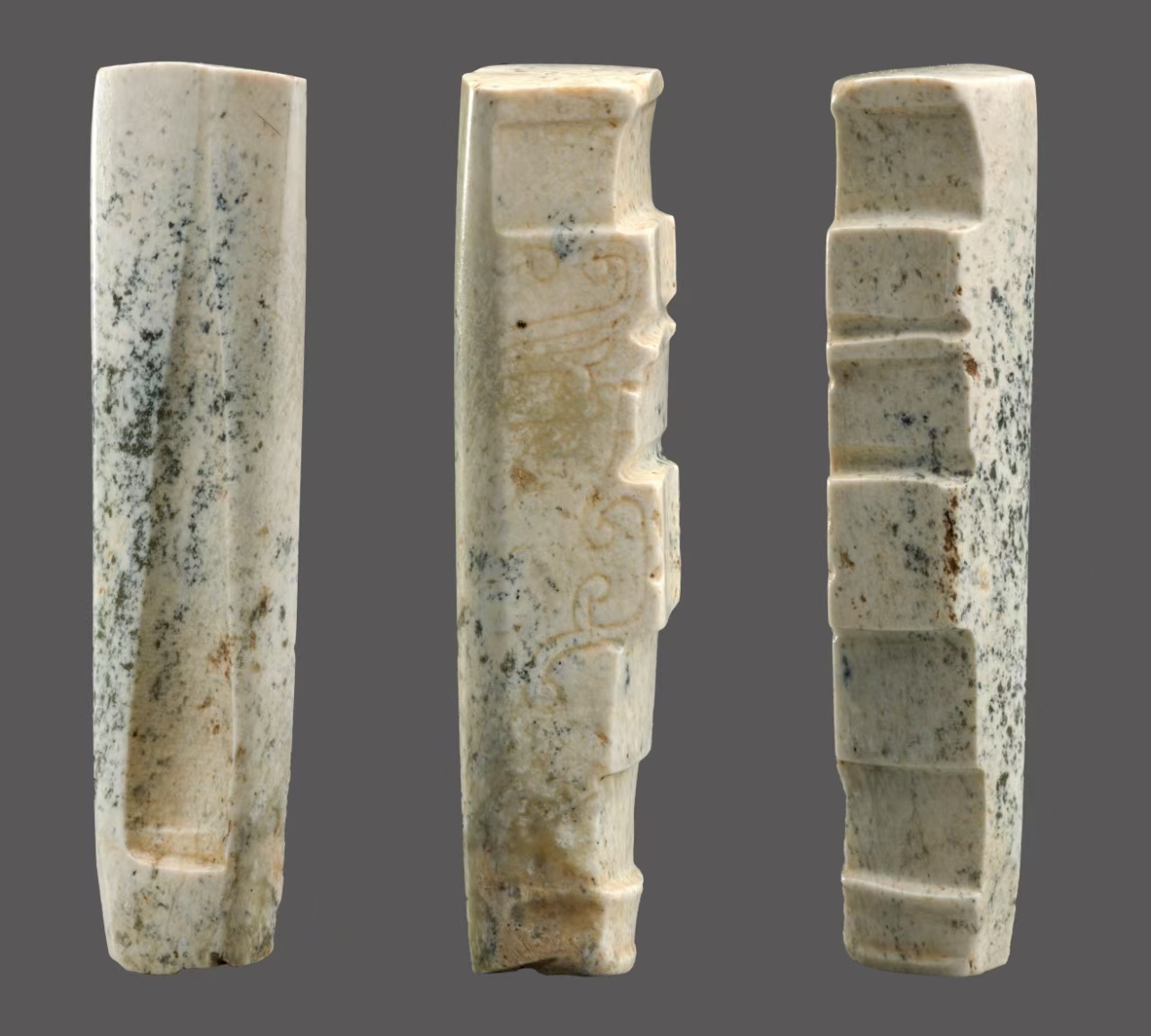 The remains of walls and handicrafts are also discovered, among which the remains of walls discovered so far are curve-shaped, with the south part measuring 190 meters long. It is estimated that the total length of its east part might reach at least 150 meters. With the width of 4.5-5 meters and a height of 1.5 meters, obvious layers of rammed earth can be observed in the walls, and hence the walls are assessed to have been built with continuous efforts through a period of time. Both sides of the walls are slope-shaped, the widest part of its bottom reaching 8-10 meters. Some parts of the walls were built on the basis of the original ditch remains. Two human sacrifices were found at the bottom of the wall, both lying supine with their limbs straight.
The remains of walls and handicrafts are also discovered, among which the remains of walls discovered so far are curve-shaped, with the south part measuring 190 meters long. It is estimated that the total length of its east part might reach at least 150 meters. With the width of 4.5-5 meters and a height of 1.5 meters, obvious layers of rammed earth can be observed in the walls, and hence the walls are assessed to have been built with continuous efforts through a period of time. Both sides of the walls are slope-shaped, the widest part of its bottom reaching 8-10 meters. Some parts of the walls were built on the basis of the original ditch remains. Two human sacrifices were found at the bottom of the wall, both lying supine with their limbs straight.
考古发现有墙垣与手工业遗存。墙垣遗存目前探明部分呈曲尺形,已探明南部长190米,推测东部总长至少可达到150米。墙垣主体宽4.5-5米,残高1.5米,有明显夯层,多次修筑而成,两侧呈斜坡状,底部最宽处可达8-10米,部分是在原有的沟类遗存基础上进行营建。墙垣底部发现两处人祭现象,均为仰身直肢。
A large area of gray and black soil deposits was found, including many carbon particles, burnt soil granules and red burnt soil blocks. Copper smelting remains such as copper slag and furnace walls were unearthed around, indicating the possibility of a bronze-casting handicraft industry. Four roads were found, of which L2 has a proven length of 320 meters. Part of the area retains clear ruts with a spacing of about 85 centimeters, which is not much different from the spacing of the ruts at the Erlitou site (88-92 centimeters).
考古发现有大面积灰黑土堆积,包含有较多碳粒、烧土颗粒和红烧土块,周围出土有铜炼渣与炉壁等冶铜遗存,预示着存在冶铸青铜器手工业的可能性。发现道路4条,其中L2已探明长度320米。部分区域保留有明确车辙痕迹,间距约85厘米,与二里头遗址的车辙(88—92厘米)间距相差不大。
The southwest part of the site is a wetland connected to the trench and river nearby, where many shells and silt were found.
遗址西南部为1处湿地,发现有较多的螺壳和淤泥,湿地与附近的壕沟、河流相连。
 Transit and Control Hub of Capital Resources
Transit and Control Hub of Capital Resources
王都资源转运控制枢纽
The relics unearthed at the Baliqiao Site are abundant, including pottery, stone implements, jade, oracle bones, turquoise tools, and more. The stone implements unearthed are mainly stone axes and chisels. There are no agricultural tools such as stone sickles or stone knives, which confirms the high standard of the rammed earth construction area. More turquoise was found in embedded form, with fewer ornaments and a small amount of scrap, indicating the existence of a handicraft industry to process inlaid tablets of turquoise. In addition, the site also unearthed handle-shaped jade vessels, axe stone, painted stone figures, carved symbols, and other relics, reflecting the spiritual life of the Baliqiao Site. The features of the pottery combinations and artifacts are highly consistent with that of the Erlitou Site, highlighting the strong influence on and control over the Baliqiao Site of the royal capital area.
八里桥遗址出土遗物丰富,计有陶器、石器、玉器、卜骨、绿松石器等遗物。出土的石器以石斧、石凿为主,不见石镰、石刀等农业生产工具,侧面印证了夯土建筑区的高规格。绿松石发现较多,主要以嵌片为主,饰品较少,另有少量的废料,说明遗址可能存在以加工绿松石嵌片为主的手工业。此外遗址还出土有玉柄形器、石钺、涂朱石人像、刻画符号等遗物,反映了八里桥遗址精神生活。陶器组合和器物特征与二里头遗址高度一致,凸显了王都地区对八里桥遗址的强大的影响力和控制力。
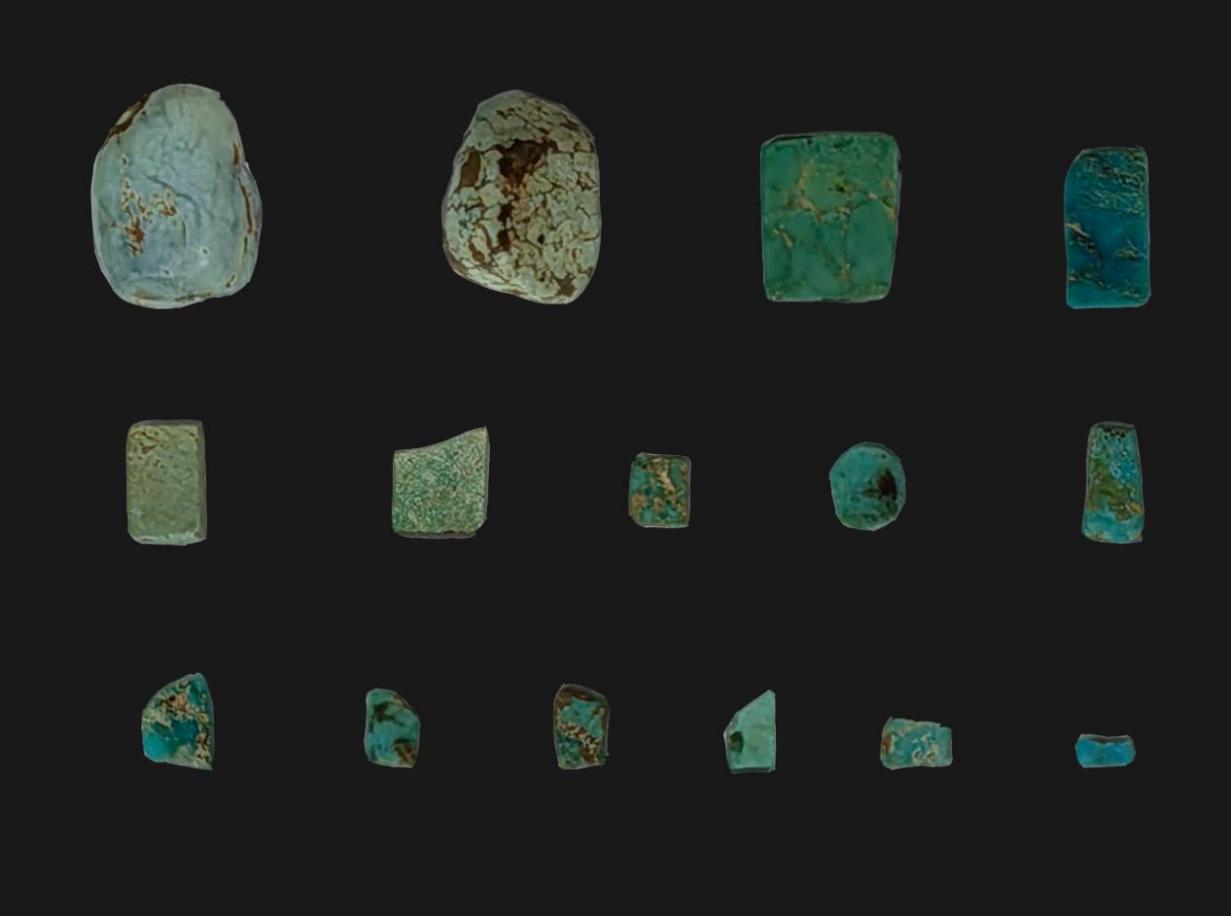 Wang Hao, who is in charge of the archaeological excavation site of Baliqiao and the deputy director of the Xia Culture Research and Planning Office of the Henan Provincial Institute of Cultural Heritage and Archaeology, said that the Baliqiao Site was formed in the second phase of the Erlitou culture, which was a crucial period when Xia culture began to expand outward. Xia Culture crossed Fangcheng Pass and entered the Nanyang basin, constructing a large number of cultural settlements of Erlitou and establishing a large settlement near the Baliqiao Site to control the south and ensure the safety of the capital.
Wang Hao, who is in charge of the archaeological excavation site of Baliqiao and the deputy director of the Xia Culture Research and Planning Office of the Henan Provincial Institute of Cultural Heritage and Archaeology, said that the Baliqiao Site was formed in the second phase of the Erlitou culture, which was a crucial period when Xia culture began to expand outward. Xia Culture crossed Fangcheng Pass and entered the Nanyang basin, constructing a large number of cultural settlements of Erlitou and establishing a large settlement near the Baliqiao Site to control the south and ensure the safety of the capital.
八里桥遗址考古发掘现场负责人、河南省文物考古研究院夏文化科研规划室副主任王豪介绍说,八里桥遗址形成于二里头文化二期,正是夏文化开始向外扩张的关键时期。夏文化越过方城垭口进入南阳盆地,兴建一大批二里头文化聚落,并在垭口附近建立大型中心聚落八里桥遗址用于对南方的控制,保障王都的安全,是夏王朝在关键时期关键节点设立的关键遗址。遗址所在地理位置是连接中原腹地和江汉平原的关键咽喉,是南方铜矿、绿松石和朱砂等矿产资源进入王都地区的重要安全保障,是二里头王都资源转运与控制的重要枢纽。
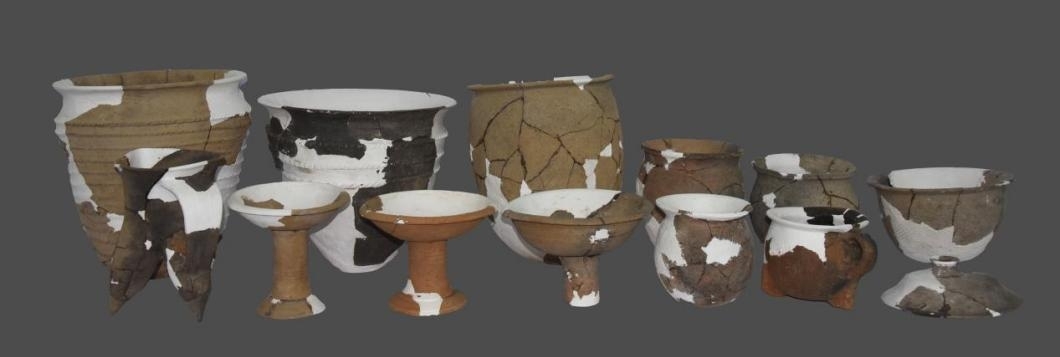 It is a crucial site established at a key juncture of the Xia Dynasty during a critical period. The site is located at the key pass connecting the hinterland of the Central Plains and the Jianghan Plain. It is an important safeguard for the mineral resources of copper mines, turquoise, and cinnabar to enter the royal capital area, and also an important hub for the transit and control of capital resources in Erlitou.
It is a crucial site established at a key juncture of the Xia Dynasty during a critical period. The site is located at the key pass connecting the hinterland of the Central Plains and the Jianghan Plain. It is an important safeguard for the mineral resources of copper mines, turquoise, and cinnabar to enter the royal capital area, and also an important hub for the transit and control of capital resources in Erlitou.
考古发掘研究表明,八里桥遗址面积135万平方米,功能区划完备、有夯土建筑区、手工业区、墙垣、道路等设施,出土有玉器、卜骨、绿松石嵌片、冶铜遗存等高等级遗物,无不彰显出八里桥遗址较高的社会生产力和社会地位,是夏王朝南方重要的核心聚落。
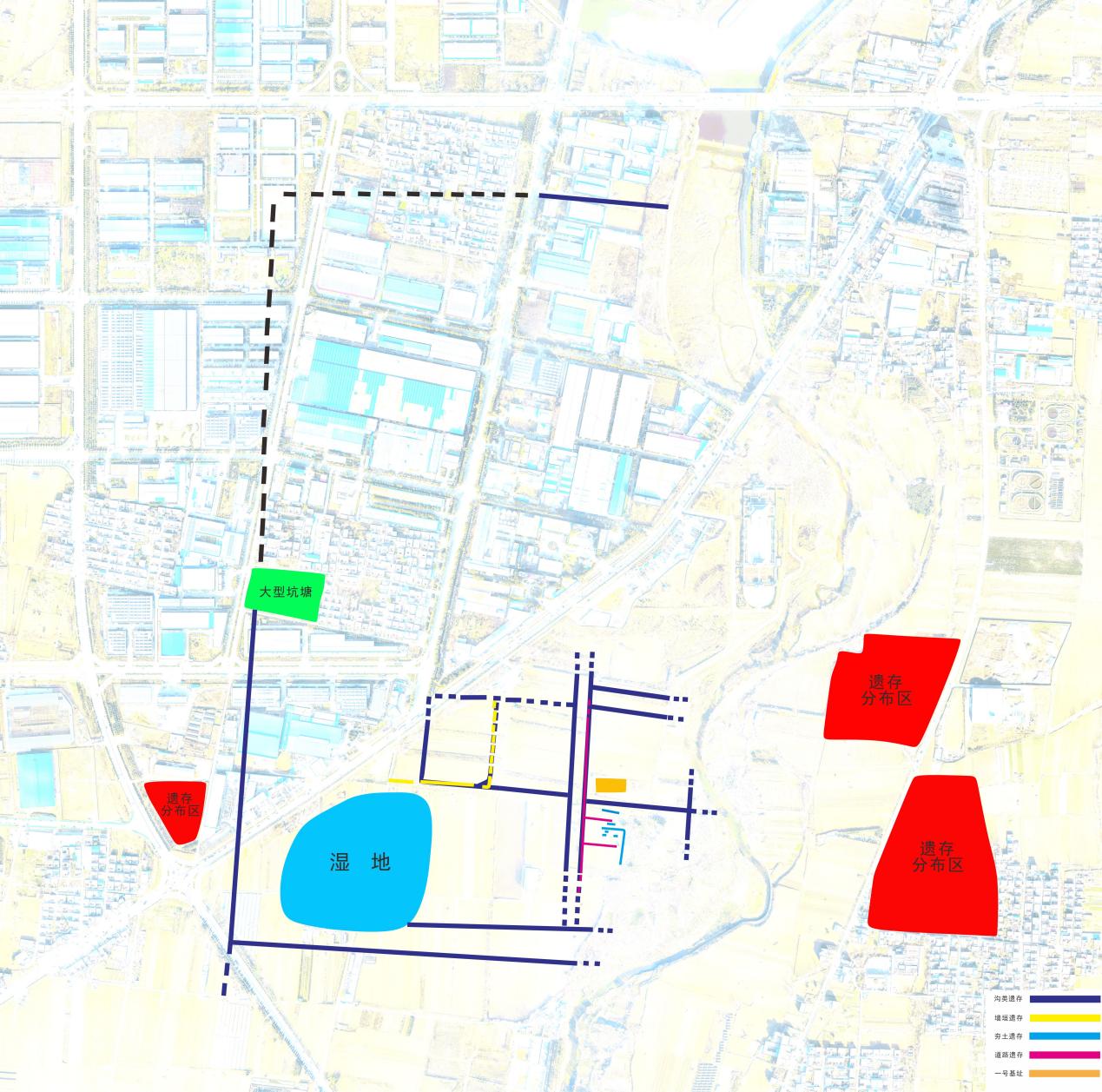
Archaeological excavation research shows that the Baliqiao Site covers an area of 1.35 million square meters with complete functional zoning, including a rammed earth construction area, handicrafts area, walls, roads and other facilities. The high-grade relics unearthed, such as jade, oracle bones, embedded turquoise, and smelting copper remains, demonstrate the higher social productivity and social status of the Baliqiao Site, which was a crucial core settlement in southern Xia Dynasty.
王豪认为,八里桥遗址在聚落布局、功能区划、陶器组合和器物形态以及精神生活方面与二里头遗址保持高度一致,体现出八里桥遗址和二里头遗址存在着高度的内在关联。二里头时代的聚落研究主要集中在二里头遗址,次级中心聚落如望京楼遗址、大师姑遗址聚落布局不甚明晰,八里桥遗址的聚落布局填补了次级中心聚落研究的空白。(图片由河南省文物考古研究院提供)(中文来源/河南日报 记者/张体义 见习记者 刘曈 英文编译/刘畅 崔贝贝 英文审校/焦丹)
Wang Hao believes that the Baliqiao Site is highly consistent with the Erlitou Site in terms of settlement layout, functional zoning, pottery combinations, artifact forms, and spiritual life, showing their close internal connection. Settlement research of the Erlitou era has mainly focused on the Erlitou Site. The layout of secondary center settlements, such as Wangjinglou Site, and Dashigu Sites, is not clearly defined, but the settlement layout of the Baliqiao Site fills the gap in the research of the secondary center settlements. (The pictures are provided by Henan Provincial Institute of Cultural Heritage and Archaeology.) (Source/Henan Daily Reporters/Zhang Tiyi and Liu Tong Translators/Liu Chang and Cui Beibei Proofreader/Jiao Dan)
Web editors: Shen Jianqi, Tong Lin
